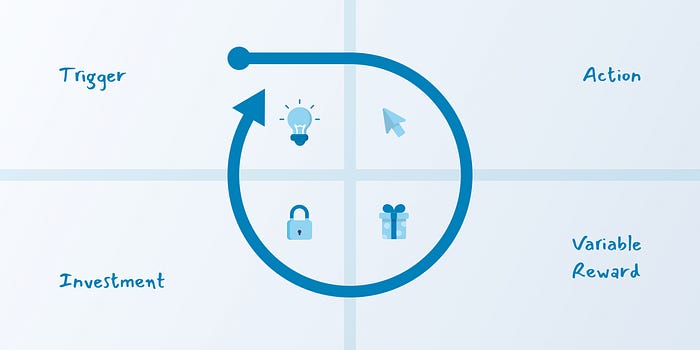
Design for long-term behaviours and habit-forming products

The habit-forming Hook Model
Created by consumer psychology expert, Nir Eyal, the Hook Model teaches us how we can change behaviours in an ethical and useful way for people. Whether we’re looking to create or break habits, the Hook Model is a fascinating framework for behavioural change.
The goal of the Hook Model is to create a habit-forming technology that provides some sort of relief. By creating a source of alleviation will drive continued use of the product or service, and ultimately increase the customer lifetime value (CLV).
To create a habit-forming product using the Hook Model, we can design for four critical phases:
When users go through all four phases of the Hook Model, they will begin to associate the product or service as the source of relief. And that is when the habit is formed.
Learn more about using the Hook Model for creating habit-forming products.
Hooked: How to Build Habit-Forming Products — Nir Eyal